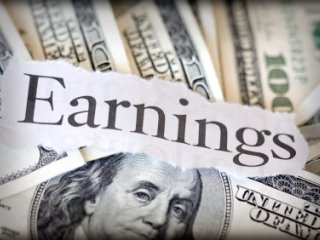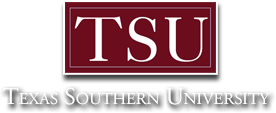
- Description
- Objectives
- Outline
- Materials
- System Requirements
- Watch a Demo
Our Money and Banking course addresses the modern framework of today's financial system and the important roles of both financial markets and banks. We examine financial sectors of the economy, monetary policies, and interest rates. This course shows how the financial system consists of all securities, intermediaries, and markets that exist to match savers and borrowers.
Prerequisite(s): None
After completing this course, you should be able to:
- Identify types of economic forces that affect the money and banking system
- Recall the key factors contributing to interest rates, inflation, and financial crises
- Recognize the role of financial regulations, structures, and monetary policies
- Identify the basics of international monetary regimes and foreign exchanges
- Recall the roles of the central bank and the federal reserve systems within the economy
Money and Banking Module 1
Introduction to the Financial and Monetary Regime
- A Country’s Financial and Monetary Regime
- The Real and Financial Sectors of the Economy
- Measuring Economic Performance
- Periods of Major Economic Distress
- Basic Concepts Regarding Money
- The Value of Money
- Evolution of Monetary Standards
- Relationship Between Money and Economic Activity
Money and Banking Module 2
The Financial System and the Country’s Flow of Funds
- Sector Budgets
- Income and Balance Sheets
- Fundamentals of Flow of Funds Equation
- Surplus, Deficit and Balanced Sectors
- Direct Finance
- Indirect Finance
Money and Banking Module 3
Interest Rates in the Financial System
- Interest Rates in Indirect and Direct Finance
- Government Interest Rate Regulation
- A Short History of Interest Rate Regulation
- Basic Technical Aspects of Interest Rates
- Level of the Interest Rate
- Loanable Funds
- Supply and Demand
- Nominal Interest Rate and Real Interest Rate
- Interest Rates and Monetary Policy
Money and Banking Module 4
Structure of Interest Rates
- Default Risk
- Liquidity or Marketability Effect
- Tax Treatment
- Maturity
- Shape of the Yield Curve
- Yield Curves
Money and Banking Module 5
International Dimensions of the Financial System
- U.S. Statement of International Transactions
- Foreign Exchange Rates
- The Exchange Rate
- Foreign Exchange Intervention by the Central Bank
- Exchange Rate Regimes
- Fixed Exchange Rates
- Flexible Exchange Rate System
Money and Banking Module 6
Roles of Government
- Minting Coin and Gresham’s Law
- Commodity-Based Monetary System
- Inverted Pyramid Monetary System
- Fractional Reserve Systems
- Institutionalization
- Extended Rationales for Government Involvement
- History and Politics on Government Involvement
Money and Banking Module 7
Regulation and Supervision of the Financial System
- Asymmetric Information, Adverse Selection, and Lemons
- Depository Financial Institutions
- Deposit Insurance
- Capital-Asset Requirements
- Non-depository Financial Institutions
- Transparency in the Money and Capital Markets
- The Federal Reserve as a Regulatory and Supervisory Agency
Money and Banking Module 8
History of the U.S. Financial and Monetary Regime in Transition
- Taxonomy of a Changing Financial and Monetary Regime
- Major Turning Points
- A Brief History from 1776 to the Present
Money and Banking Module 9
Design of the Central Bank
- Institutional Design of the Central Bank
- Ownership of the Central Bank
- Central Bank Independence from Government
- Design of the Federal Reserve System
- Base Money
- Money Supply
Money and Banking Module 10
Tools of Monetary Policy
- Tools of Monetary Policy and Decline of Selective Tools
- General Tools of Monetary Policy
- Moral Suasion and Forward Guidance
- Monetary Policy Instruments
- Macroeconomic Models of the Economy
- Why Models Are Important
- The Rise and Fall of the Phillips Curve
- Aggregate Demand and Supply Model
Money and Banking Module 11
Policy Targets and Tactics
- Evolution of the Final Policy Targets
- Neoclassical Perspective
- A Steady and Low Rate of Inflation
- Primacy of Price Stability and Inflation Targeting
- The FOMC and Monetary Policy
- Evolution of Federal Reserve Tactics
- The Rules vs. Discretion Debate
Money and Banking Module 12
Performance of the U.S. Financial and Monetary Regime
- The Great Depression
- Role of the Federal Reserve
- The Great Inflation
- The Great Moderation
- Financial Liberalization and the Great Moderation
- Asset Bubbles
- The Great Recession
- Collapse of the Housing Bubble
**Outlines are subject to change, as courses and materials are updated.**
**Outlines are subject to change, as courses and materials are updated.**
Ed4Career is committed to being both environmentally conscious and making it easier for you to study! We’re making your education mobile! All of our textbooks are now provided as eTextbooks. You can access them on your laptop, tablet, or mobile device and can study anytime, anywhere.
The move away from physical books to eTextbooks means you get the latest, most up-to-date version available. This also makes your training more accessible, so you can study anywhere you have your phone or tablet. The best part is that all materials are included in your training cost so there are NO extra fees for books!
Internet Connection
- Broadband or High-Speed - DSL, Cable, and Wireless Connections
*Dial-Up internet connections will result in a diminished online experience. Classroom pages may load slowly and viewing large audio and video files may not be possible.
Hardware Requirements
- Processor - 2GHz Processor or Higher
- Memory - 1 GB RAM Minimum Recommended
PC Software Requirements
- Operating Systems - Windows 7 or higher
- Microsoft Office 2013 or higher. Also, you could use a general Word Processing application to save and open Microsoft Office formats (.doc, .docx, .xls, .xlsx, .ppt, .pptx)
- Internet Browsers - Google Chrome is highly recommended
- Cookies MUST be enabled
- Pop-ups MUST be allowed (Pop-up Blocker disabled)
- The Kindle Reader App or VitalSource Bookshelf App are needed for many of our courses (No special equipment needed. This can be downloaded for FREE onto your computer.)
- PowerPoint Viewer (if you do not have PowerPoint)
- Adobe PDF Reader
- QuickTime, Windows Media Player &/or Real Player
MAC Software Requirements
- Operating Systems - Mac OS x 10 or higher with Windows
- Mac office programs or a Word Processing application to save and open Microsoft Office formats (.doc, .docx, .xls, .xlsx, .ppt, .pptx)
- Internet Browsers- Google Chrome is highly recommended
- Cookies MUST be enabled
- Pop-ups MUST be allowed (Pop-up Blocker disabled)
- The Kindle Reader App or VitalSource Bookshelf App are needed for many of our courses (No special equipment needed. This can be downloaded for FREE onto your computer.)
- PowerPoint Viewer (if you do not have PowerPoint)
- Adobe PDF Reader
- Apple QuickTime Media Player
